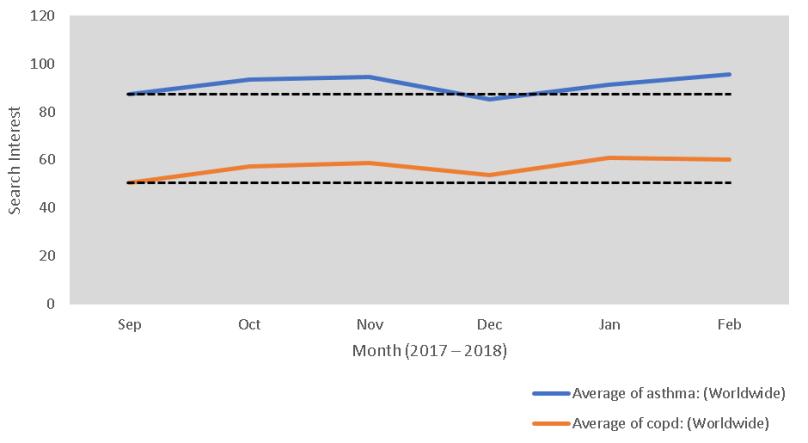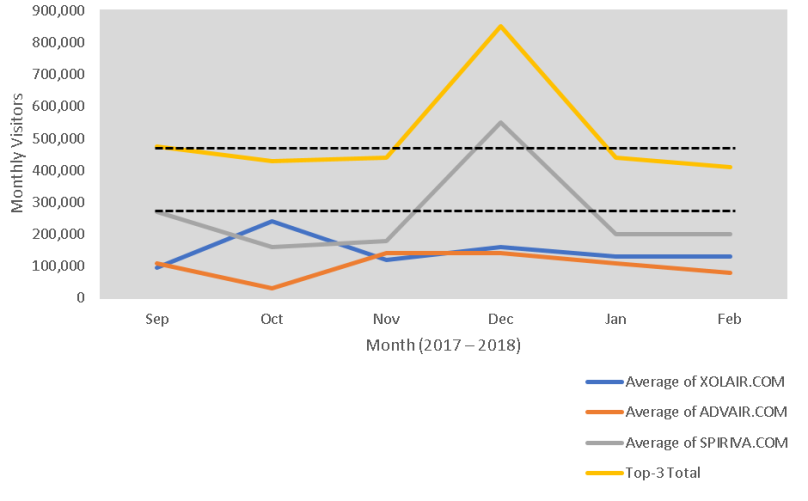If you work in Life Science, you’re probably familiar with the sobering statistics on nonadherence: between 20% and 30% of medication prescriptions are never filled, and roughly 50% of chronic disease medications aren’t taken as prescribed. The problem is complicated and costly. But by developing a more consistent—and more human—approach to boosting patient engagement, life science companies can increase adherence, improve outcomes, and enhance the bottom line.
The heart of patient engagement is about deepening connections with brands. It’s about partnering with patients to help them better understand and manage their own health. It’s not a new concept, but the fast-changing healthcare landscape has heightened its importance. New technologies also promise to make patient engagement easier and more effective, which is doubtless why the market for engagement solutions is projected to reach more than $16 billion by 2020.
Identifying the right opportunities
The first step to boosting patient engagement is identifying where to start. In a portfolio of hundreds of brands, how can you uncover the most high-impact opportunities? One way is to quantify the relationship gap that exists between brands and their patients. Which therapies are patients seeking out when interest in a category grows? Starting with sites like Google Trends and SimilarWeb, identify patient engagement with individual brand websites and compare this to general search queries for a particular treatment area.
In 2018 for example, I researched respiratory treatment engagement for three top-selling respiratory brands. I discovered that traffic to unbranded Asthma/COPD websites was down more than 10% over the past six months, whereas searches for Asthma and COPD information were actually the same or higher compared to the previous year. Also, the brands’ social media channels had a steady count of followers, but engagement on these platforms was incredibly low, at less than 0.003% per post.
The result: a strong opportunity for pharmaceutical manufacturers to deepen the connections between those brands, their patients, and healthcare providers. Search engines continue to be one of the top referrals of traffic to condition websites. So I advised the life science companies to invest in more top-performing and rising keywords in search engine and content marketing strategies—terms like ‘asthma allergy,’ ‘asthma guidelines,’ ‘aerosure for copd,’ and ‘icd 10 copd’—to strengthen the connection between their brands and the content patients and HCPs desire most. I also advised them to boost social media engagement by polling followers on the types of content they most wanted to see next.
Leveraging delivery networks
Most pharma companies use physician education programs to help cut through the network of intermediaries that sit between brands and their patients. In fact, 89% of U.S. companies surveyed by benchmarking firm Best Practices included healthcare provider (HCP) education among their top 10 patient engagement strategies. Yet the average patient spends between 13 and 24 minutes with his or her doctor.
How can you encourage delivery networks to devote at least a few of those minutes to helping patients understand the value of your therapies?
One of the most valuable tools is simply having—and sharing—detailed information about the patients to whom your therapies are prescribed. The better you understand what patients search for online, discuss on social media or in community groups, and so on, the better you can help healthcare providers understand and address their concerns.
Here are some other ways to encourage delivery networks to help boost patient engagement:
Make it easy for healthcare providers to get what they need
Healthcare providers are always looking for better ways to engage their patients with the limited time they have. Give them access to information that helps them do just that, and you’ll not only increase your credibility but make yourself a true partner in their practices.Ask your sales teams to provide a list of the top questions they receive from HCPs and use this to guide content strategies. Think about any relevant health data (i.e., activity, mindfulness, sleep, nutrition, etc.) that may be on patients’ phones and that could allow HCPs to personalize each visit. Can you make it easier for HCPs to download this data? You can also calculate the cost of non-compliance to each practice so HCPs better understand what’s at stake.
Make it easy for patients to get what they need from your brand
Delivery networks must trust you before they will refer their patients. So keep the patient journey in mind when organizing your content—and consider the perspectives of new patients, returning patients, and caregivers.Start by setting clear expectations for patients on what they can expect from your brand. Highlight a range of experiences from real patients, perhaps organized by desired outcomes; if possible, put side-effects in an easier-to-understand context (i.e., the likelihood of getting a headache is similar to the risk of a car crash in the U.S.). You can also partner with other content providers who are authorities in the condition to build links and cross-link with these communities.
Finally, develop materials that facilitate communication between patients and HCPs. A discussion guide will give patients and caregivers an easy way to track symptoms and get more from each doctor visit. A starter list of relevant health technology applications can help broaden their understanding of the landscape.
Engage with patient communities
Each engagement is an opportunity to demonstrate that you understand the community’s experiences. Highlight patient and caregiver stories and celebrate their success. Sponsor community events that align with brand and patient values. And partner with nonprofit organizations to help them advance their missions by recognizing the brands’ contributions to the therapeutic area.
A quick word about post-discharge outreach, which has grown in popularity and been shown to reduce preventable hospital readmissions, among other benefits. HCPs tend to assume that these phone calls are best done by professionals, and may struggle to conduct them at scale. But often, patients just want a chance to feel heard. During an engagement at Pleio, for example, I helped develop telephonic engagement programs that relied on normal people to conduct patient outreach. They listened to patient experiences, answered common questions, and helped them get started right with their new prescription. If a patient had questions or concerns about their prescription, the caller could refer them back to their pharmacy for more information.
The outcome: These programs saw a 41% higher medication adherence rate (PDC) and at least one more script refill per person, per year.
Making direct connections
In an era of consumerized healthcare, the opportunity to address patients directly is more important—and more powerful—than ever. According to the Best Practices study, forming partnerships with patient advocacy groups and hosting educational portals are, respectively, the second and third most common patient engagement strategies used by life science companies.
However, evidence suggests that the industry still has a long way to go. A 2015 WEGO Health study on patient engagement found that a majority of the participants surveyed did not believe the industry works collaboratively with patients, and less than 10% felt the pharmaceutical industry understands and addresses their needs.
The good news? The number one patient suggestion for improving engagement was increasing direct contact. Here are some ways to do that:
- Blend tech and touch. SMS offers an efficient and powerful way to keep in touch with patients. But it can also feel very impersonal. Make it more relevant to patients’ lives by incorporating context into your outreach.
With the arc of your brand’s therapeutic area in mind, think about which communications would be more effective at specific times of day, or given specific weather conditions. Can you design an outreach program that feels responsive to what patients are likely to be feeling? How else can you help them along their way?
- Integrate application technologies into your products. Bundling medication applications with prescriptions is another way to proactively ensure patient success.
Humira, for example, built an application that helps patients track where they gave their last shot, monitor their symptoms, and set reminders for their next injections. The Dexcom Clarity application provides a platform for patients to share their blood glucose data directly with healthcare professionals, who can respond within the application with any treatment recommendations and engage with patients who are falling behind.
- Look for opportunities to personalize. 41% of patients diagnosed with obesity feel they could manage their conditions more effectively if they had more targeted information on how to change their behavior. Don’t miss the opportunities technology affords to adapt your communications to what you know about your patients.
Overcoming internal barriers
A modern marketing approach puts the patient first and requires constant development and iteration. Of course, in any big company context, competing priorities can compromise even the smartest efforts. So it’s worth reviewing how a focus on patient engagement can make a big impact across the organization:
- Faster market research. Brands can use real-time A/B testing to identify which messaging components work best at engaging patients and healthcare professionals. Pilots can run with multiple variances in copy, visual, and calls-to-action; the full media weight can be scheduled a few weeks later using the winning combination.
- More efficient clinical recruiting. By creating more engaged patient populations, brands can gain permission from people who are more interested in learning about and participating in future clinical trials—thereby reducing the cost of your next patient trials.
- Stronger media performance. Deeper patient understanding helps brands create more natural and authentic connections with patient communities. Think of the ROI you will see!
- Streamlined marketing technology stack. By focusing on the patient and HCP experience, brands can select technology partners that deliver the marketing goals and business outcomes that count. From website visitor segmentation, personalized landing pages, more contextual media placements and future engagement efforts.
- Better outcomes. Increasing the value of care is everyone’s responsibility. Focusing on patient and caregiver engagement allows brands to build relationships with healthcare providers and give sales teams what they’ve always wanted: insights that make it easier to grow their customers’ business.
The time to start is now
Technology has dramatically expanded the number of ways that life science brands can personalize the patient journey. Success, however, starts not with technology but by understanding patients’ needs, concerns, and motivations. Only then can companies craft the best engagement strategies and create more complete, empathetic, and personalized care for patients.
Greater patient engagement does more than just drive prescriptions—it also helps patients improve their health at lower cost. And that’s something all stakeholders in the healthcare equation can be happy about.
Get the Skills You Need
Thousands of independent consultants, subject matter experts, project managers, and interim executives are ready to help address your biggest business opportunities.
About the Author
More Content by Broderick Crosland






















